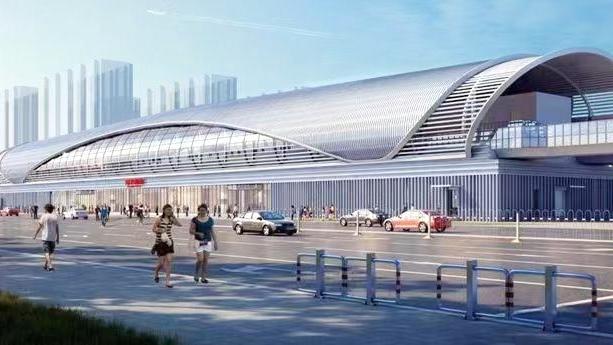
Top 10 Benefits of Choosing Steel Structure Buildings
In today’s construction industry, efficiency, sustainability, and long-term reliability have become key priorities for business owners and developers alike. As a result, steel structure buildings have gained enormous popularity worldwide. From warehouses and factories to offices and agricultural facilities, prefabricated steel structures offer unmatched performance and versatility.
If you are planning a new project and evaluating the best construction material, this article explores the top 10 benefits of steel structure buildings and why they have become the go-to solution for modern construction.
1. Superior Strength and Durability
Steel is one of the strongest construction materials available today. Its high tensile strength allows it to withstand extreme loads, high winds, and seismic activity far better than traditional materials like wood or concrete.
Steel does not crack, split, or warp over time, which means your building remains structurally sound for decades with minimal maintenance. This makes it especially suitable for industrial facilities, warehouses, and large-span buildings.
2. Faster Construction and Installation
Time is money in every construction project. Prefabricated steel structures are designed and manufactured in a controlled factory environment, then shipped to the site for assembly. This reduces on-site construction time by 30–50% compared to conventional concrete buildings.
The faster the installation, the sooner your facility becomes operational—helping you save costs, reduce downtime, and achieve faster returns on investment.
3. Cost-Effectiveness and Long-Term Savings
While the initial investment in steel construction may seem comparable to concrete or brick, the lifecycle cost is significantly lower.
Key cost-saving factors include:
- Reduced labor and equipment costs
- Minimal waste during fabrication
- Faster project completion
- Low long-term maintenance
Over the life of the building, steel’s resistance to corrosion, pests, and weather significantly reduces repair expenses.
4. Flexible and Customizable Design
One of the greatest advantages of steel structure buildings is design flexibility. Steel allows architects and engineers to create wide, column-free spaces with customizable dimensions.
Whether you’re building a logistics center, aircraft hangar, or retail complex, steel’s versatility supports both functional and aesthetic requirements.
You can easily integrate mezzanines, cranes, or partition walls—and even modify or expand your building in the future without major structural changes.
5. Energy Efficiency and Environmental Performance
Modern steel buildings are designed with energy efficiency in mind.
By using insulated wall panels, reflective roofing systems, and natural ventilation, you can significantly reduce heating and cooling loads.
Additionally, steel is 100% recyclable, making it one of the most sustainable materials in the construction industry. Many developers now choose steel structures as part of their commitment to green building certifications such as LEED or BREEAM.
6. Low Maintenance Requirements
Unlike wood, which can rot or attract termites, or concrete, which may crack over time, steel requires very little maintenance.
A properly coated steel structure resists rust, moisture, and corrosion, even in harsh weather conditions. Routine inspections and occasional repainting are usually enough to maintain structural integrity for decades.
This low-maintenance factor makes steel buildings particularly attractive to industrial users who prioritize operational efficiency and cost control.
7. Fire and Pest Resistance
Safety is a non-negotiable aspect of any building design. Steel is a non-combustible material that does not contribute to the spread of fire, making it a safer choice for industrial or storage facilities.
Moreover, it is immune to pests such as termites and rodents, ensuring long-term hygiene and security—especially in agricultural, warehouse, and food-processing environments.
8. Sustainability and Eco-Friendly Construction
Environmental responsibility is now a key consideration for developers worldwide. Steel aligns perfectly with this trend:
- It is 100% recyclable and reusable without loss of quality.
- Manufacturing processes have become more energy-efficient over the years.
- Prefabrication minimizes on-site waste and pollution.
These attributes make steel a preferred choice for sustainable and eco-conscious construction projects.
9. Long Lifespan and Structural Integrity
A properly engineered steel structure can last 50 years or more with minimal degradation.
Its resistance to weather, corrosion, and seismic activity ensures consistent performance over time. This long service life provides outstanding return on investment (ROI) for owners seeking reliability and value.
Many industrial clients choose steel not just for durability but also for asset preservation, as steel buildings maintain their value better than traditional structures.
10. Easy Expansion and Modification
Businesses evolve, and so should your buildings.
Steel structures are modular and designed for easy modification. Need to add a new production area, extend storage capacity, or install a mezzanine floor? With steel, expansion is quick and cost-efficient, with minimal disruption to operations.
This scalability is particularly valuable for growing enterprises and industrial facilities that anticipate future expansion.
Conclusion: Building the Future with Steel
From strength and speed to sustainability and savings, steel structure buildings represent the perfect balance between performance and practicality.
They deliver reliability, flexibility, and efficiency — all the qualities today’s businesses demand in their infrastructure.
Whether you’re constructing a manufacturing plant, warehouse, office complex, or agricultural building, choosing steel ensures long-term value, minimal maintenance, and superior design freedom.
In a rapidly changing world, one thing remains constant: steel is the foundation of smart, sustainable construction.
